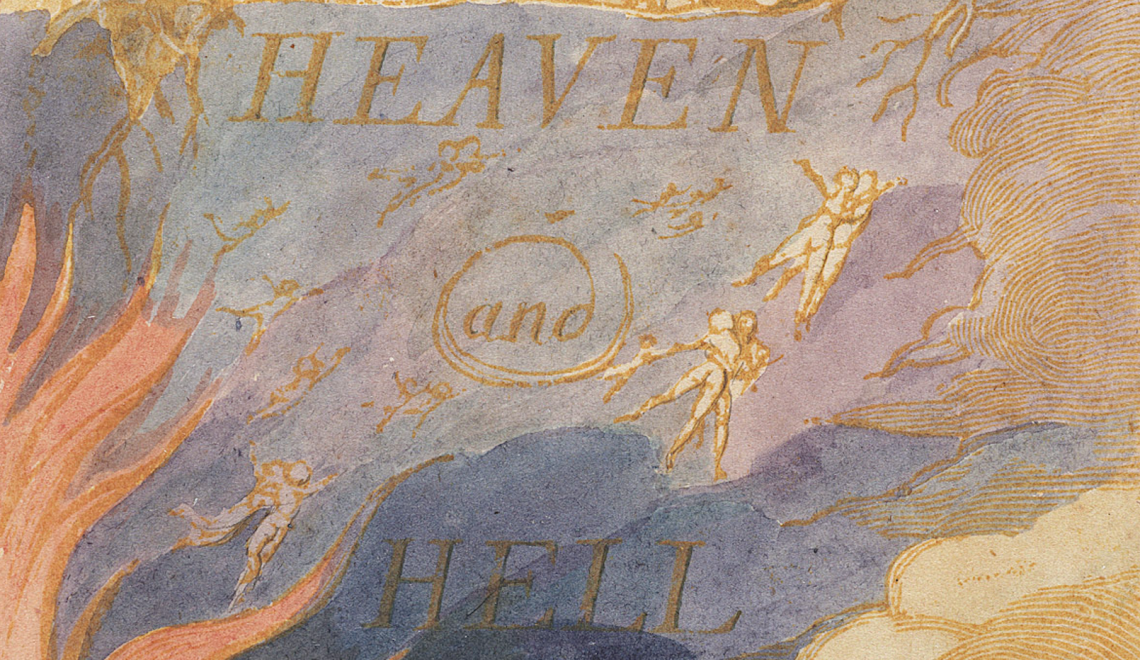The William Blake Archive is pleased to announce the publication of electronic editions of Blake’s illustrations to Robert John Thornton’s edition of The Pastorals of Virgil (1821) and a selection of his preliminary drawings for his Virgil wood engravings. The texts and images in both groups are fully searchable and are supported by our Inote and ImageSizer applications.
When planning a third edition of his successful school text of Virgil’s Pastorals, Robert John Thornton employed Blake to contribute some of the new designs for the two-volume work. His assignment was to illustrate Ambrose Philips’ English “imitation” of Virgil’s first eclogue. Blake produced four small designs as relief etchings on a single copperplate, but these were rejected by Thornton. There may have been several reasons, including the unconventional style of etching, the semi-nudity of some of the figures, and the difficulties letterpress printers would have encountered with such an unusual matrix. Apparently Blake was asked to prepare wood engravings, a medium in which he had never before worked, instead of relief etchings. He executed a series of at least twenty-one pen, pencil, and wash preliminary drawings; these were probably approved by Thornton. The wood engravings that Blake produced from them, however, were far less conventional. Thornton was again taken aback by Blake’s bold transgression of contemporary styles and sensibilities. Several influential artists, including John Linnell and Sir Thomas Lawrence, commended Blake’s work; their opinions convinced Thornton to print them in his 1821 edition. Three designs were engraved by a journeyman for the sake of comparison with Blake’s own productions in wood, and Thornton added a statement below Blake’s first design implying his hesitations about Blake’s artistry. Pre-publication proofs of Blake’s wood engravings show that each group of four were cut on a single block; these were cut apart, slightly reduced in size on all four sides, and printed with brief letterpress captions. This format, as published in Thornton’s Virgil, is preserved in our reproductions.
In addition to his original wood engravings, Blake contributed six copperplate intaglio engravings picturing famous classical figures. He also executed a reduced drawing, perhaps directly on the woodblock, based on a painting by Nicolas Poussin. This was cut in the block by John Byfield. All these materials are included in our reproductions of Thornton’s Virgil. In addition, the relief etching of four designs, the woodblock of Blake’s first wood engraving, and the pre-publication proofs of two groups of designs (I and II) before they were separated are available under Related Works in the Archive on the Show Me menu for objects 5-7.
Twenty of Blake’s preliminary drawings for his wood engravings, all executed in monochrome wash, were sold at auction from the Linnell collection in 1918. These are now widely dispersed; seven are untraced and one drawing in the group was not engraved. We are now publishing a selection of seven of these drawings and plan to add more as they become available.
Although small in size and almost rejected by the man who commissioned them, Blake’s Virgil wood engravings have been among his most influential works. The young artists who gathered around Blake in his final years, including Samuel Palmer, George Richmond, and Edward Calvert, were deeply inspired by the Virgil engravings. Palmer called them “visions of little dells, and nooks, and corners of Paradise”—an encomium that ignores the darker implications of some designs. Several twentieth-century British artists, including Graham Sutherland, were also influenced by Blake’s wood engravings.
As always, the William Blake Archive is a free site, imposing no access restrictions and charging no subscription fees. The site is made possible by the University of North Carolina at Chapel Hill with the University of Rochester, the continuing support of the Library of Congress, and the cooperation of the international array of libraries and museums that have generously given us permission to reproduce works from their collections in the Archive.
Morris Eaves, Robert N. Essick, and Joseph Viscomi, editors
Ashley Reed, project manager, William Shaw, technical editor
The William Blake Archive

